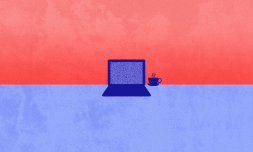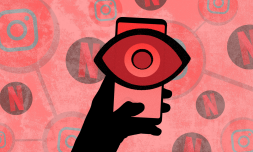More young people today are interested in going self-employed than ever before, but it’s not quite as simple as quitting your day job and lugging a laptop to Starbucks. Here’s a rundown of the essentials you need to know.
Say you haven’t had an existential crisis over the few years and we’ll call you a liar.
Left to our own devices throughout the majority of the pandemic, there’s been little else to do but pick apart all of our life decisions. It’s been great.
For many, this sudden interruption to our daily routines spurred on an innate desire to break away from the 9-5 lifestyle.
Now that we’re regaining a sense of normality, more young people than ever before are reportedly keen on the idea of going self-employed and becoming their own boss.
Whether driven by a hunger to pursue passions outside their current job descriptions, or the increased flexibility of being able to binge Netflix specials for days at a time, as much as 22% of Gen Zers have now decided to go solo in the business world.
As we become increasingly more connected, people are wising up to the fact self-employment is no longer a hopeless fantasy, but binning off morning commutes and quarterly appraisals does come at a cost.
As someone who spent close to a year freelancing at 21-years-old, here’s the key aspects you need to consider before making the leap – especially if you’re only just entering the world of work.
The mental adjustment
Firstly, as we’re dealing with the most introspective and anxious generation in recent history, it’s only right to begin with the drastic mental adjustment that comes with freelancing.
While at first, packing in early mornings and strict hourly lunchbreaks will provide a breezy novelty, you may find yourself yearning for a sense of routine earlier than expected.
Liberating as it is to become to your own boss, the instant shakeup of unpredictable income, managing your business and finances, and general lack of workspace camaraderie can be tough to deal with – especially if your entire working day is remote.
As such, it’s important that you create a routine to fit your lifestyle as soon as possible and stick to it. Be lenient on yourself, but ensure you have an agenda to tick off every working day.
There are huge perks to going freelance, and though it may sound like an obvious thing to say, you should ensure you’re actually enjoying it.
Take lunchtime walks, run your errands, videocall friends and family, and give yourself mini breaks. Most importantly, set a time to clock out each day. You should never feel trapped at your desk.
Also, if your friends are partying it up at uni across the country, get on a dang train once in a while.
Sorting your setup
In lieu of making your actual work as seamless as possible, it goes without saying you’ll want to invest in some good equipment and probably zhush up your ‘home office’.
If you’re into design or photography, for instance, editing software and high quality cameras are a necessity, while those looking to learn a computer coding course like React or Java will perhaps want to spend out on a dual monitor setup and a speedy PC.
Those pairing their freelancing efforts with studies in a related field may be eligible to apply for a grant from their college or University, but most will have to dip directly into their savings.
For this reason, it’s not recommended taking the plunge without any disposable income to speak of.
Granted, it’s completely normal to go through lull periods of revenue as a freelancer, but your landlord probably won’t be so understanding of the ebb and flow when it’s burning a hole in their pocket.
You’ll also want to account for any delayed invoices for your services down the line. The reliability of clients will vary on a case by case basis, and you should always ensure your expenses are covered.
In essence, you’ll want to save a reasonable emergency fund before you make your first buck freelancing – maybe open one in Monzo.




















